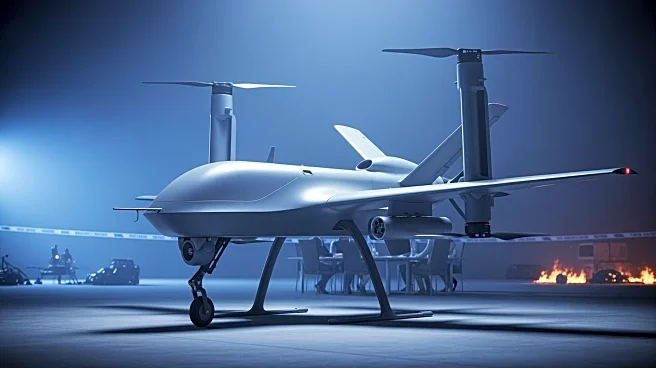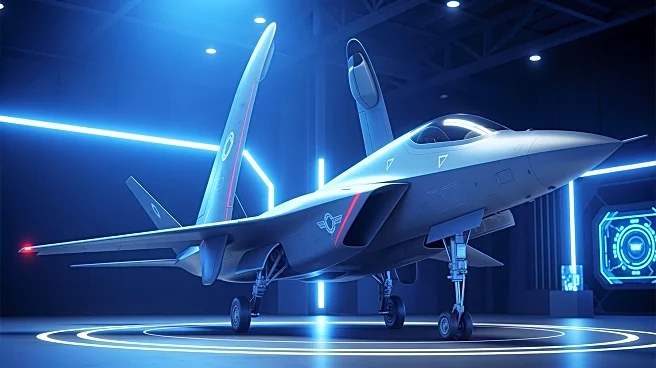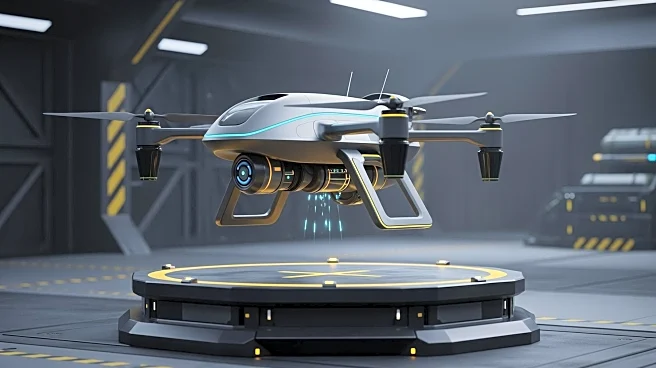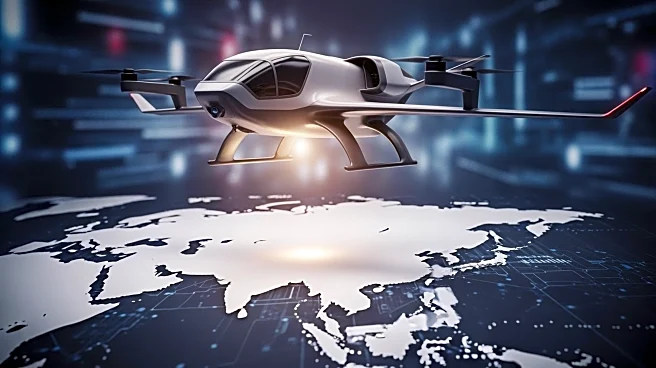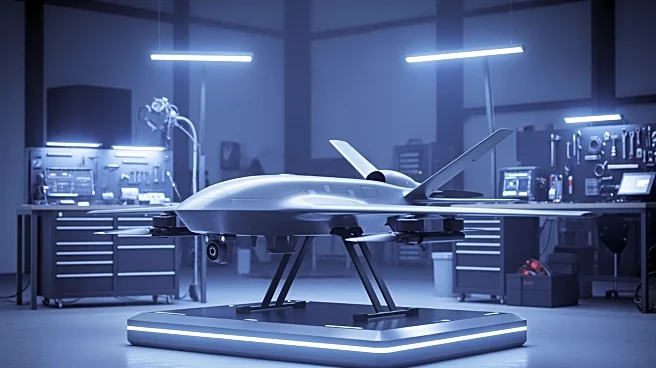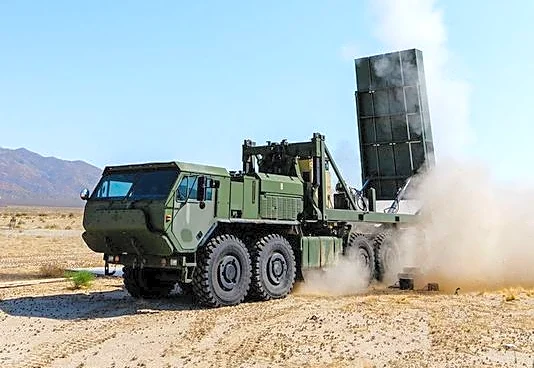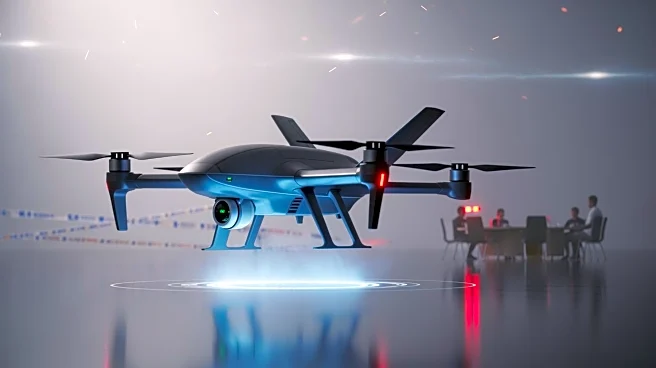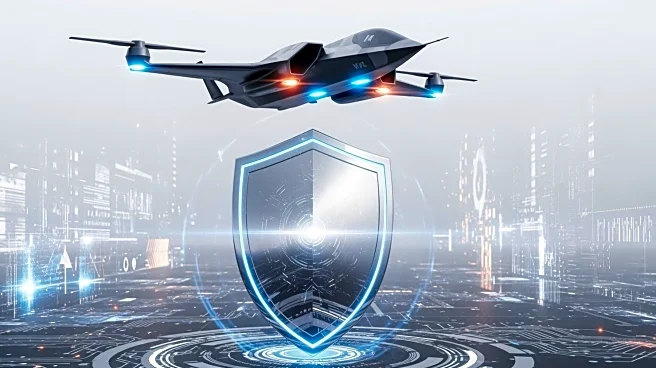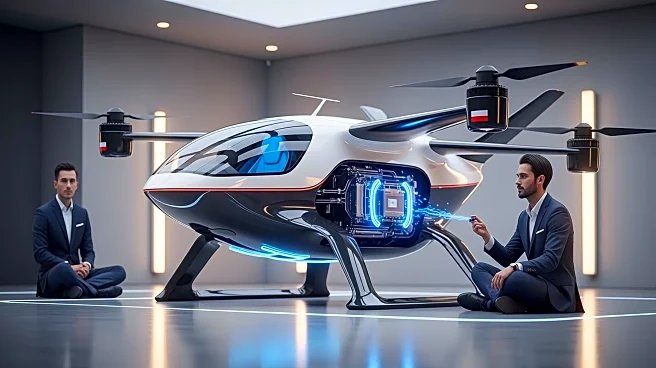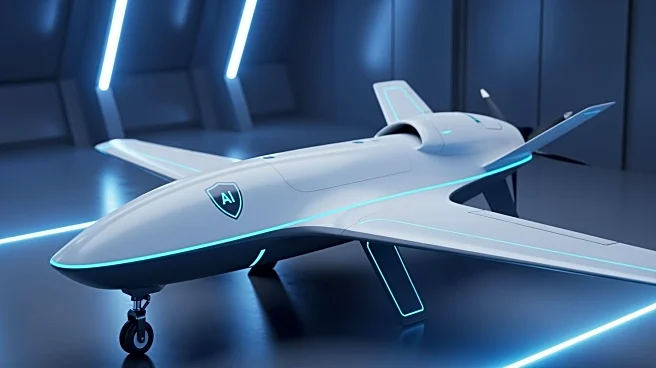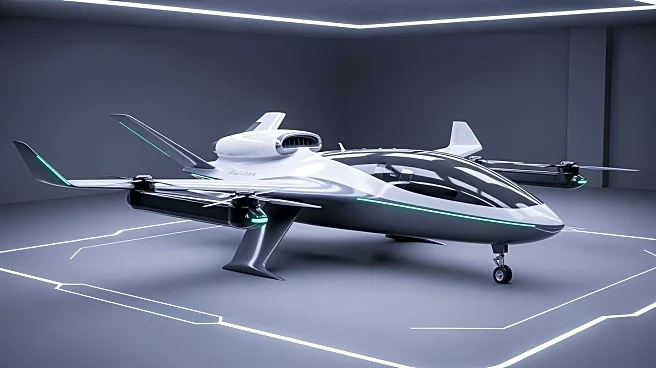What's Happening?
Shield AI, a defense technology company based in San Diego, has introduced the X-BAT, an autonomous fighter jet capable of vertical takeoff and landing (VTOL). This development marks a significant step
in the Pentagon's efforts to integrate autonomous drones into combat missions alongside human pilots. The X-BAT, powered by Shield AI's Hivemind software, is designed to operate in environments where GPS and communications may be compromised. The aircraft boasts a range of over 2,000 nautical miles and can reach altitudes above 50,000 feet, offering multirole capabilities including strike, reconnaissance, and electronic warfare missions. The unveiling of the X-BAT highlights Shield AI's entry into the military drone market, with the company emphasizing the strategic advantage of runway-independent operations.
Why It's Important?
The introduction of the X-BAT represents a significant advancement in military drone technology, potentially transforming air combat strategies. By enabling operations without the need for runways, the X-BAT enhances the survivability and flexibility of military forces, providing a strategic advantage in various combat scenarios. The aircraft's autonomous capabilities reduce the risk to human pilots and eliminate the need for extensive pilot training, offering cost-effective solutions compared to traditional fifth-generation aircraft. Shield AI's development aligns with the Air Force's Collaborative Combat Aircraft program, which aims to deploy AI-enabled drones as force multipliers. This shift towards autonomous warfare could redefine military tactics and resource allocation, impacting defense budgets and operational planning.
What's Next?
Shield AI plans to conduct the first flights of the X-BAT in fall 2026, with full mission capability demonstrations expected by 2028. The company is engaging with potential military customers, although specific services or programs expressing interest have not been disclosed. As the Pentagon increasingly relies on venture-backed defense companies for critical systems, questions about production capacity and sustainability arise. Shield AI must demonstrate its ability to meet military requirements, a challenge faced by other defense companies. The successful deployment of the X-BAT could accelerate the integration of autonomous aircraft into military operations, influencing future procurement and development strategies.
Beyond the Headlines
The reliance on autonomous drones raises ethical and strategic considerations, particularly regarding decision-making in combat scenarios. The ability of AI to make autonomous decisions, including weapons launch, challenges traditional military command structures and raises questions about accountability and control. Additionally, the involvement of private companies in developing critical defense technologies highlights the evolving landscape of military procurement, where innovation and agility are increasingly valued. This shift may lead to long-term changes in how defense contracts are awarded and managed, impacting the relationship between the military and private sector.
